A Brick-Built Bridge Bonanza
Let’s get Nerdy about bridges! Today I thought it would be fun to do a little deep-dive into something that’s been around for a very long time in human history: bridges. And since you’re here on BrickNerd, I figure we’ll keep the discussion about LEGO bridges, sound cool? Ok, let’s get into it!
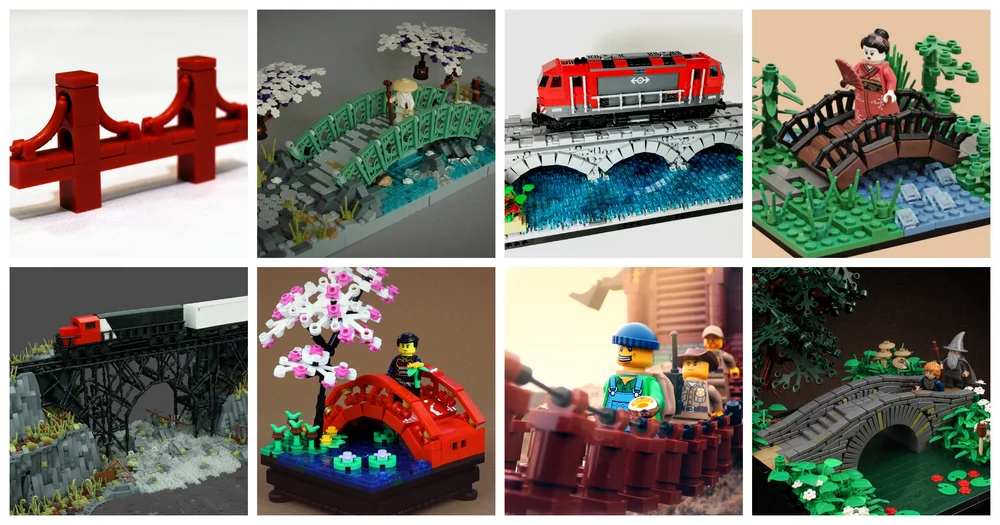
Let’s start this off by stating the obvious, bridges are cool. In real life, absolutely. In LEGO, oh ab-so-lutely! And there are a LOT of ways to build a bridge. When I first started thinking about writing an article about LEGO bridges I did a quick search on Flickr and my first reaction was “there are a LOT of bridges!” I pitched the idea to the rest of the nerds over here and within a few minutes I had about a dozen examples of bridges that people in the community had built over the years. So yeah, bridges are cool.
As mentioned, there are a lot of different ways you can create a bridge using LEGO bricks (believe it or not, you can even use Technic pieces…). In this article, my aim is to showcase a bunch of different versions which will hopefully inspire you to try some of these techniques yourself if your minifigs ever feel the need to get across a body of water or a steep canyon.
Bending the Rules
Below is an example of a fairly simple structure that can become a bit more complex (and fragile…) if you are willing to bend the rules a bit. The basic structure of the bridge is simply a bunch of stacked plates. Although if you bend the stack, you get something that has a pretty sweet curvature. You know what else has that? That’s right, a bridge. I made this a few years ago after I got my hands on those awesome Ninjago fence-pieces in sand green. I messed around with them a bit and put them on the side, at which point I realized they would make for great railings. Putting a rounded 1x1 plate on one side and then connecting them (they hold together ok), you get a really nice bend which works perfectly when constructing a bridge. It takes a bit of patience to get it all to hold together in a somewhat stable way, but the end result is pretty sweet.

Down below is an example of a bridge I did a few years ago for Summer Joust. It’s a little rough around the edges (I mean, who doesn’t put tiles on top these days?) but I included it anyway as it shows a pretty easy way to get some interesting shapes to decorate your bridge. As you can see I used a fairly simple technique with 1x2 plates that are not completely connected on one side to create a rounded shape that acts as imaginary support between the pillars of the bridge. Simple, but pretty effective.
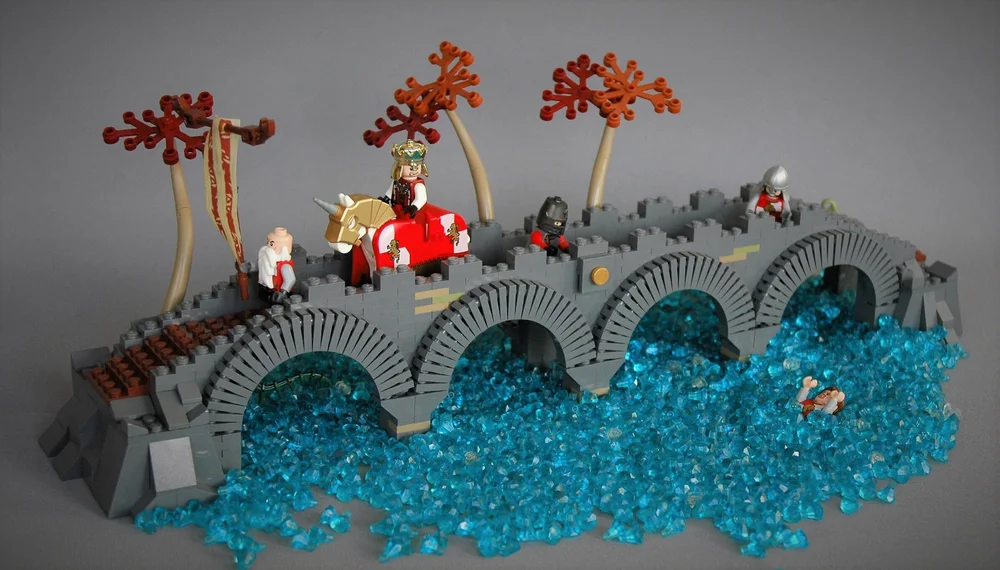
A much (much, much) cleaner version using basically the same technique is this one by the ever-talented Thorsten Bonsch, where the rounded shape is underneath the bridge. The result is just stunning, as is that dark green water!

Another example of making a rounded shape between the pillars is this one by LEGO RuBrick. It has 2x2 tiles facing outwards which creates a very nice look. It also has a really sweet water technique where the trans-light blue tiles are held in place with clips. So time consuming!

Classic Techniques
Moving along we have a bridge by esteemed castle builder Isaac Snyder. This bridge seems to be a lot sturdier compared to my flimsy examples and is characterized by the use of studs in different directions to add structure and detail to the sides of the bridge. It also can be separated into two halves for easy transport!

This bridge by Magma guy uses a pretty simple, yet time-tested, technique with alternating 1x2 bricks and 1x1 rounded bricks. It’s a technique you often see in round towers but as evident by the picture below, it can just as easily be used for the rounded shape of a bridge.

Microscale Supports
There are of course also tiny little bridges, like this one from valerius_maximus that uses bananas as a support structure in a fantastic way. Building in this scale really does require some clever piece usage for it to not look out of place. (Though I cannot get over that adorable boat using the lifeguard float!)

Speaking of microscale and food, here’s another clever example by lisqr, using the hotdog element as a way to simulate the support structure found on the Golden Gate Bridge. This design has been so popular, it’s showed up on trophies and even on brick badges for nearby LEGO convention Bricks by the Bay.

Time to Flex
Jonah Schultz made this awesome bridge for Summer Joust, which acts as the setting for a beautiful scene. Jonah was kind enough to share a WIP-shot with me where you can see the structure a little better using clips and flex tube. A somewhat piece-consuming technique, but the result speaks for itself.

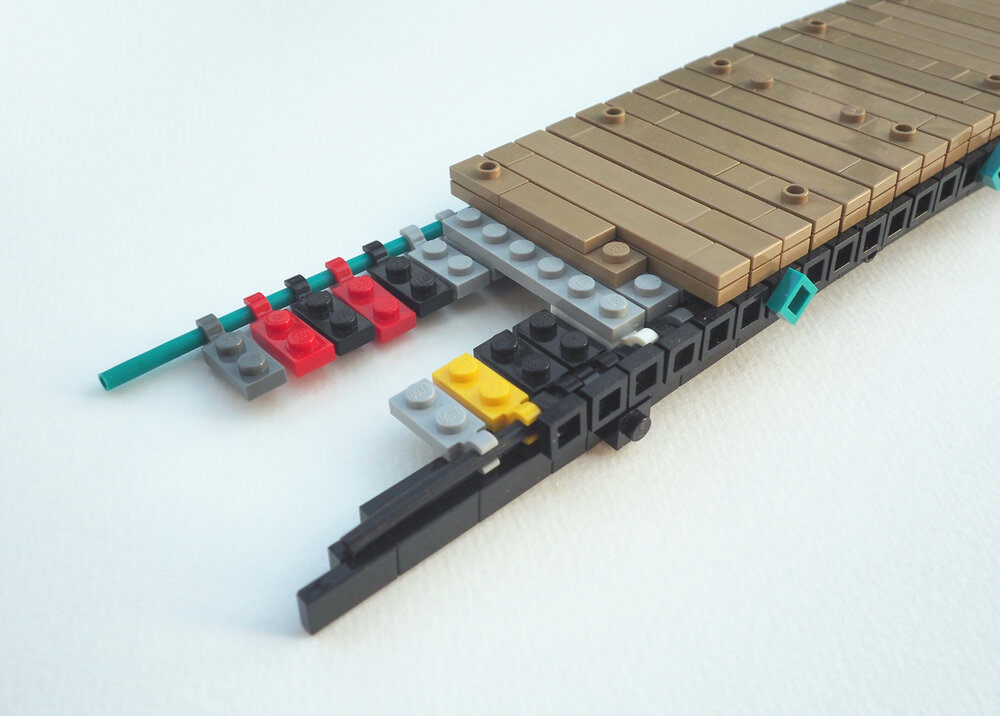
Another build from Summer Just this year was by First Order LEGO which uses Technic pieces threaded with LEGO string to make the stunning bridge shown below. The structure of the Technic pieces works great for simulating wood logs, and I can imagine this bridge is actually fairly stable (who knew you could use Technic pieces for something other than decorations? Crazy!).
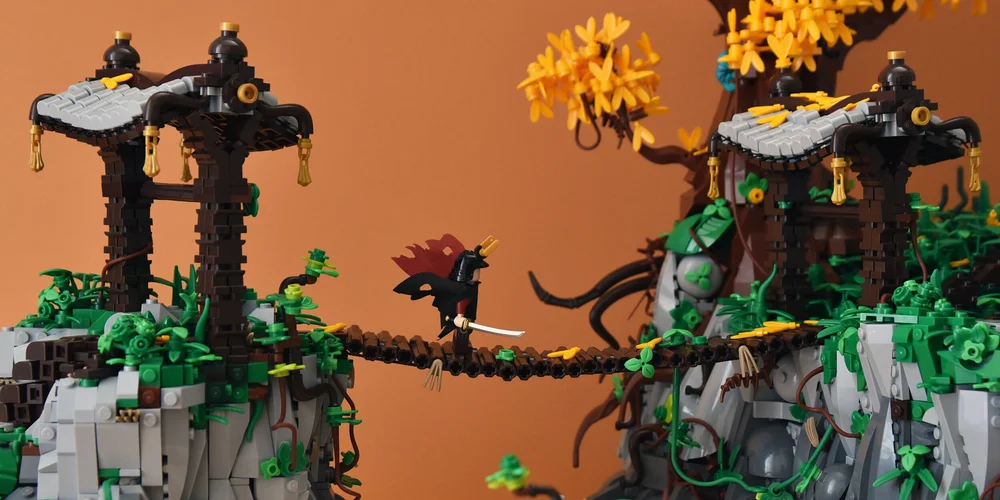
Speaking of Technic, here’s a very pretty bridge by Jaapxaap which he made for Iron Forge last year. It uses the seed part in a very nice way to create a great railing. Flex tube is everyone’s friend when creating a bend and since a lot of Technic elements are hollow, it’s easy to incorporate them as part of the structure, or at least as decorations. (Rubber ducky and brick-built lily pads for the win!)
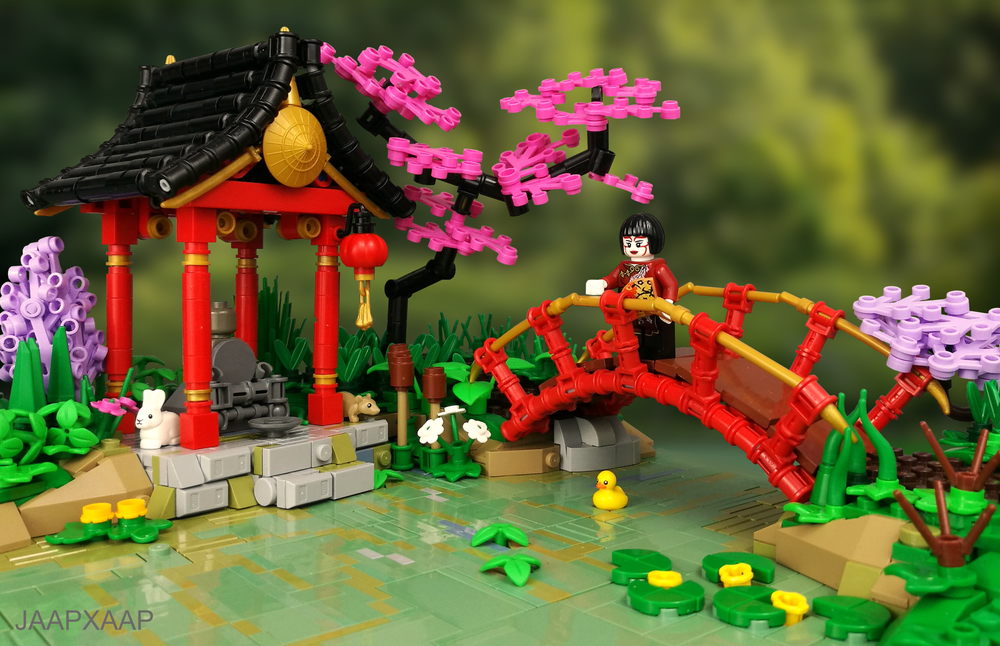
Trains and Trusses
W Navarres’ old-style wood bridge is a great example of a larger structure that uses mainly regular tiles, plates and rounded bricks to create a very imposing build. The key here in my opinion is the repetition and layers to get that epic look. Rumor has it the builder made this because he plans to one day get married on a train!
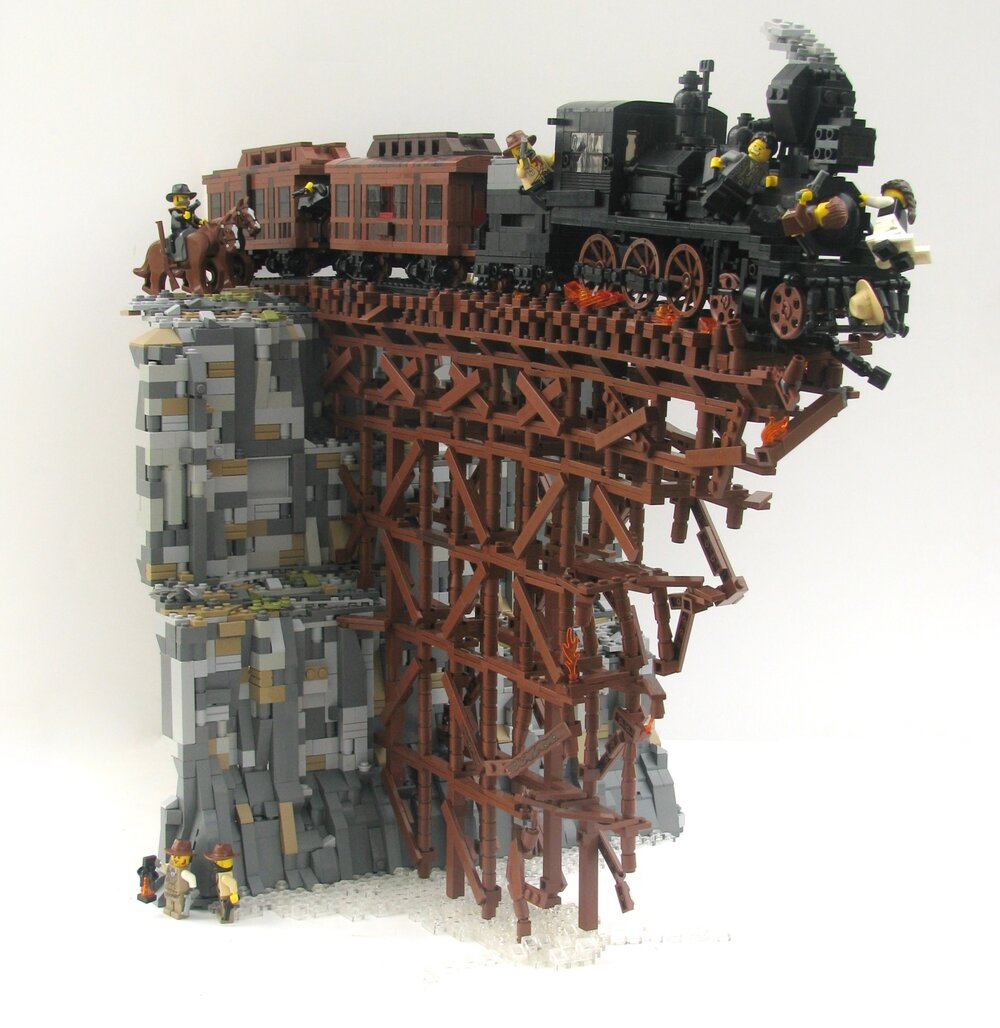
Speaking of trains, this one from Tim Schwalfenberg is just ridiculously pretty to look at. I was fortunate enough to get a really close look at it as Tim was putting it up next to me in the Masterpiece Gallery at the LEGO House a few years ago. He brought it there in a suitcase… and let’s just say it did not travel that well… but he got it all set up, and again, it’s damn pretty. The structure is achieved with a lot of different bars, lightsabers, hinges, T-bars and so on. So quite time-consuming no doubt (and nearly greebly!), but well worth it when looking at the end result.

Combining Techniques
The wonderful thing about LEGO bridges is that there is no wrong way to build them. For me, the best results come from mixing and matching styles. Isaac Snyder did a smaller bridge (as a prize in the collab-category) for Summer Joust this year, using 1x4 hinge plates. The hinges help get a solid bend in a fairly limited space.

Speaking of the Snyders, his brother John Snyder made this beautiful bridge set in a lovely winter landscape. The bridge again looks really sturdy (I expect nothing else from these guys) using a regular arch as the main element to create the curvature. What is interesting, and very useful, is the connection of the tiles on the side of the arch. The arch is hollow for the most part on the underside of it, which means you can connect a 1x1 brick with studs on the side underneath. This then allows you to decorate that section with tiles, plates, ingots, etc. It’s a pretty simple technique but very useful and can easily be used around windows as well.

Stringing Them Along
Below is another bridge from W Navarre, this time using flex tube as the primary support. It gives it that great hanging look which clearly works great for this setting. He also uses threaded string in a very impressive way to make up the railing. And even though this article is about bridges, I think we can all agree that rockwork is pretty sweet also!

Speaking of LEGO string, this build by Jonas Kramm and Travis Brickle is a great example of a not-so-piece-consuming bridge. The basic structure are two strings that are held together with plates, tiles and a few bars. Probably not the most sturdy example of a bridge, but it works very well for the overall scene. Building it probably felt as secure as the minifigs felt driving over it!

Simplicity At Its Finest
Moving along we have this nice little scene by the great Rod Gillies. The bridge is made up of a few different types of 1x2 modified plates that are stacked together. The protruding hinge parts of the modified plates create a natural bend when you stack them which again works great for the curvature of bridges.
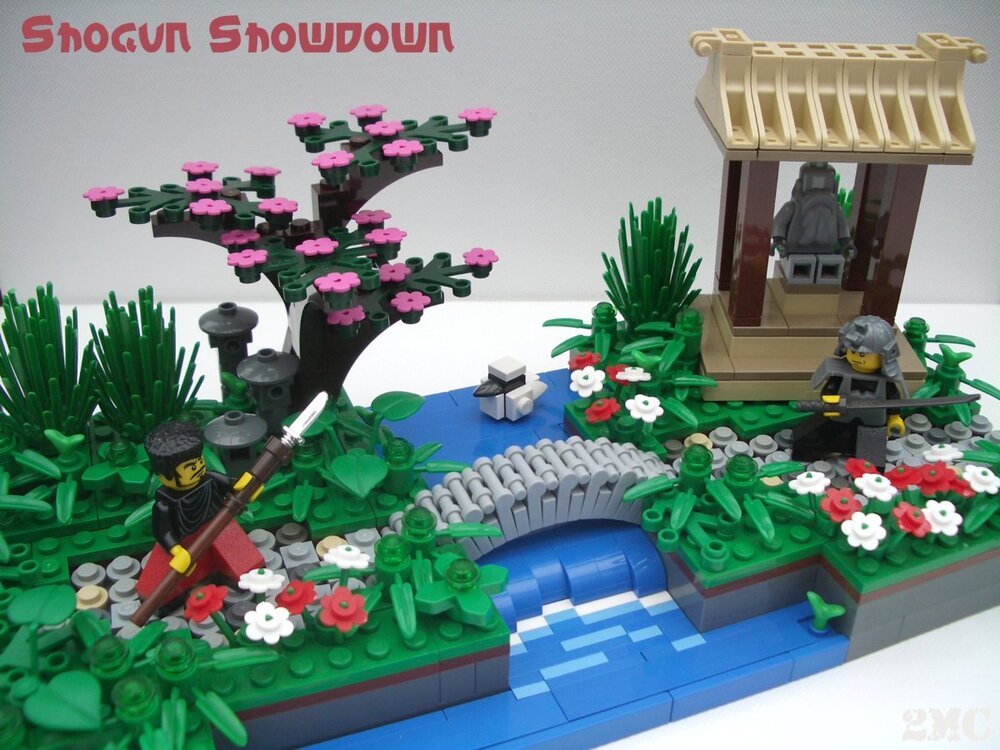
The most productive member of the AFOL community (seriously, I crank out about one MOC a week, he makes about one MOC a day…) Karf Oohlu made this clever little bridge using a tread as the base. The tread actually connects to the underside of a plate so the connection is probably fairly solid.
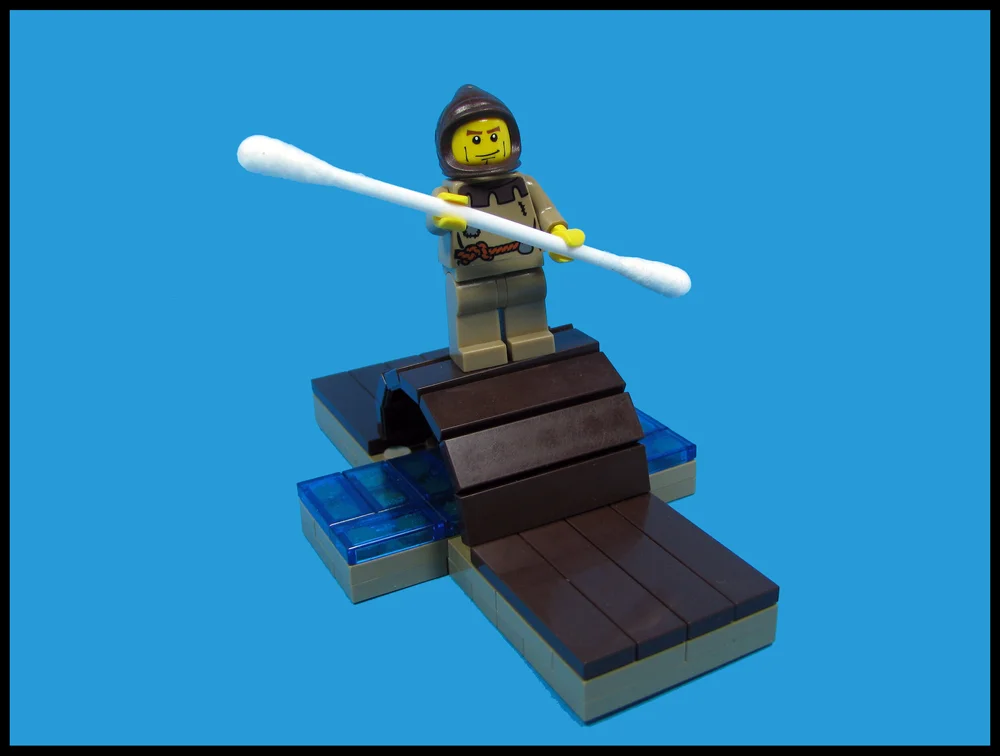

One of the easiest ways to make a bridge is to use the bigger LEGO arches, of course. Tomas makes great use of the hollow underside of them to connect plates and thus make a simple but very effective bridge.
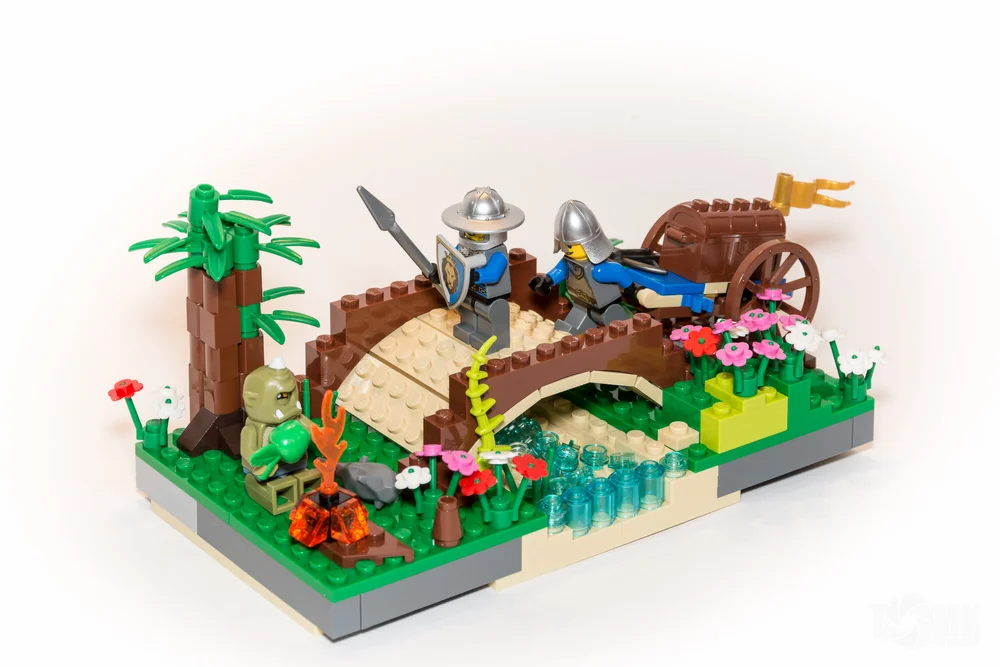
Unconventional But Effective
Unconventional is just another way to say “Nice Parts Use!” John Snyder made these great flex tube bridges for Iron Builder this year. It would probably best be classified as microscale bridges, with the clever use of 1x1 modified tile with clips turned upside down on flex tube to make the “walking part“ of the bridge.

Britishbricks shows us that large, weird, “specialized“ pieces can be used for more than their intended purpose as illustrated by this amazing railway bridge. The support structure is made up of MANY inverted skateboard ramps which work perfectly with their smooth curvature.
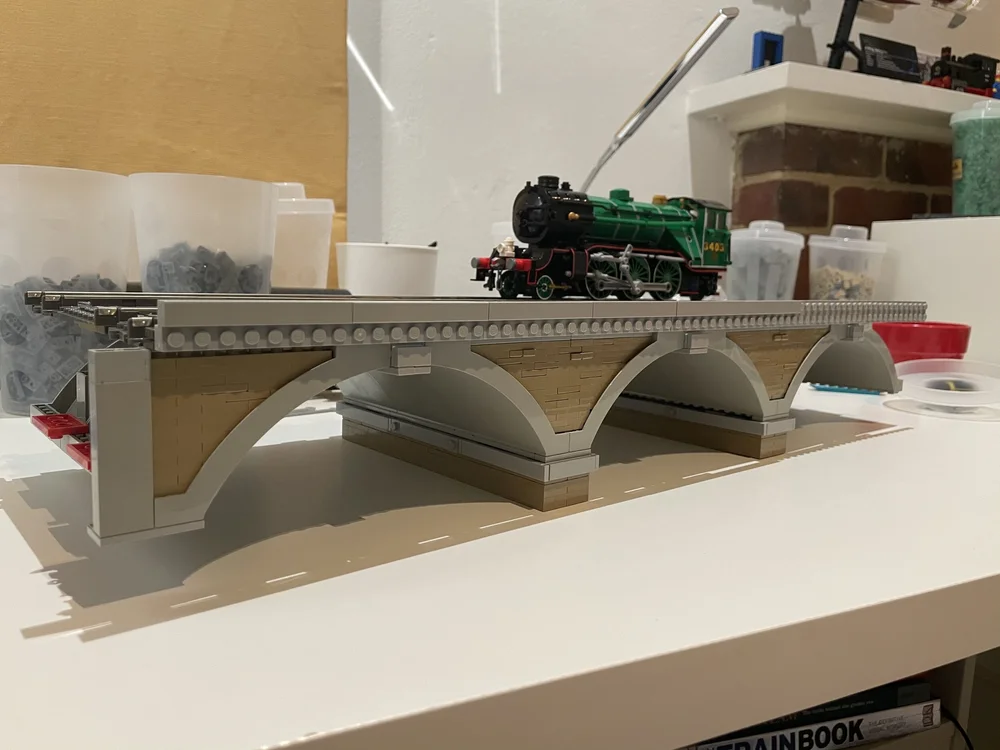
Speed Round
As you can see there are an infinite amount of ways to create brick-built bridges for your MOCs. So many, in fact, that I’m going to list off a few more rapid-fire because it would be a shame to not include them in this article! Kev.the.Builder made this beautiful Venetian-looking bridge that uses mainly rounded tiles and slopes to create a rather compact yet stunning bridge that blends perfectly into its surrounding.

Kalais brings us a great example of a string bridge. Instead of using the string as the base of the bridge, it’s used as the railing with the bridge section hanging beneath it.

Here is another example by Pascal of a slightly smaller bridge, using the same 1x4 hinge plates as the previous example by Isaac Snyder. What stands out about this bridge is the railing made up of modified 1x2 plates that work great as iron ornamental railings with the overall look of the scene.

A fairly popular use of the string shown previously is to make this type of suspended plank bridge illustrated very nicely by Gary^the ^Procrastinator’s Johnny Thunder scene (read all about Johnny Thunder here!). 1x2 plates with clips connect to the two strings and then 1x4 tiles hold them together. Again, a fairly simple but very effective way to create a cool, hanging bridge.

BLueBLue437 treats us to this very nice breakdown of a beautiful hinge-based bridge. The flex tubes add additional support for the curvature and this technique can of course be expanded in a lot of different ways to fit whatever you may be working on.

Joe made this stunning Asgard bridge for last year’s Space Jam competition. It uses a pretty simple technique with plates and bricks on the side, but as Joe illustrates (really well if you ask me), it’s possible to use this technique to create something truly awesome.
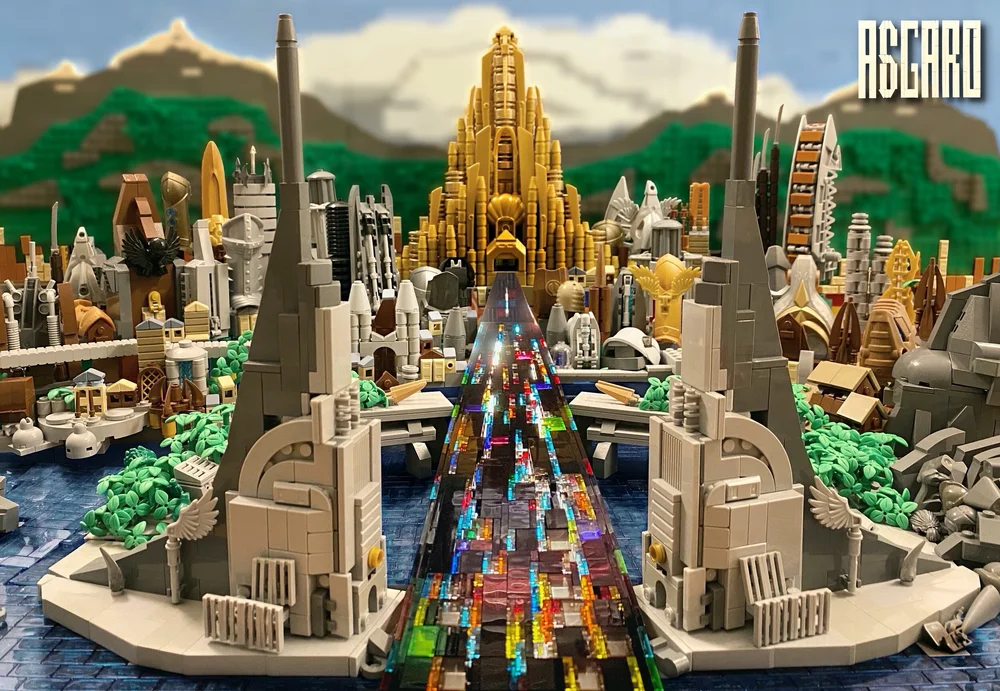
It’s always good to go out with a bang, so rounding off this whole bridge round-up is a breathtaking build by the ever-talented Rocco Buttliere. His depiction of the iconic Golden Gate Bridge is (as all his builds are) as impressive in scale as it is in accuracy. (It is just a little bigger than the hot dog bridge feature previously in this article.)

So there you go, a ton of different examples from all around the LEGO community which will hopefully be useful if you ever get the urge to do some bridge-building of your own. And as always when it comes to building techniques, they can always be expanded or tweaked to fit whatever you may want to try. Who knows, you may create the next great bridge technique!
Thanks again for stopping by, and if you have any other examples of bridges, feel free to leave a comment below.
Do you want to help BrickNerd continue publishing articles like this one? Become a patron like Charlie Stephens, Marc & Liz Puleo, Paige Mueller, Rob Klingberg from Brickstuff, and John and Joshua Hanlon from Beyond the Brick to show your support, get early access, exclusive swag and more.

